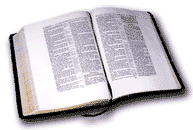The following is a
working chronology of the activities of the Apostle
Paul in relation to the church at Corinth.
1. Paul visited Corinth
on his second missionary journey and established a
church there about A.D. 50 (Acts 18:1-17).
2. While in Ephesus (A.D.
55), Paul heard of moral problems within the
Corinthian church from Chloe's people" and wrote a
letter of instruction to them. He referred to this
"previous letter" in 1 Corinthians 5:9. This letter
no longer exists; it was lost without trace. We will
call it Paul's "Corinthians A" letter after F. F.
Bruce's designation (F. F. Bruce, Paul: Apostle
of the Heart Set Free. Grand Rapids: W. B.
Eerdmans Pub. Co., 1977, p. 264).
3. Paul received a letter
from some of the members in the church concerning
serious problems within the fellowship (I Cor. 7:1).
They sought Paul's counsel in dealing with the
issues. The family of Chloe came with news of the
church (I Cor. 1:11), and the visit of Stephanas,
Fortunatus and Achaicus (I Cor. 16:17). On the basis
of the letter and other information that reached him
in Ephesus about problems in the church, Paul wrote
what is now called 1 Corinthians in about A.D. 55
and sent it to Corinth via Timothy (I Cor. 4:17). We
will call 1 Corinthians letter "Corinthians B".
4. The pastoral letter, 1
Corinthians, was not successful and the situation
grew worse. In fact, it seems to have stimulated
further rebellion against Paul's authority. In
response Paul probably made a brief visit across the
Aegean Sea to Corinth in a personal attempt to
resolve the crisis (2 Cor. 2:1; 12:14; 13:1-2). This
is often referred to as the "painful visit" which
breaks his heart. Paul was rebuffed by members of
the church. The opposition comes to a head with one
member in particular defying his authority. The
leadership in the church took no effective action in
Paul's defense. Paul, deeply humiliated, left
Corinth.
5. The "painful visit"
didn't accomplish its goal, therefore Paul returned
to Ephesus and wrote a third letter to the
Corinthians "out of much affliction and anguish of
heart and with many tears." It is referred to in 2
Corinthians 2:3-4, 9, and 7:8, 12. This "exceedingly
severe letter," delivered by Titus (2 Cor. 2:3f, 13;
7:13), is often called the stern or rebuking letter.
This letter left Paul almost sorry that he had
written it. We will call it letter "Corinthians C".
6. Titus visited Corinth
with the "severe letter" in an attempt to reconcile
the situation. Paul, in the meantime, was so anxious
to hear from Titus that he left Ephesus traveling
north to Troas seeking him (2 Cor. 2:13; 7:5, 13).
Somewhere in Macedonia, probably Philippi, Paul
received the good news from Titus of a change in
attitude in the Corinthian church. The leader of
rebellion had been rejected and disciplined. The
church was once again open to Paul's counsel and
desirous of his friendship.
7. Paul responded by
writing 2 Corinthians from Philippi around A.D. 56
or early A.D. 57. We will call this letter
"Corinthians D."
8. Paul made a final
visit to Corinth (Acts 20:1-3) during which he
solidified his relationship with the church and
received the mission offering for the Jerusalem
church. On this stay in Corinth Paul probably wrote
his letter to the Romans. He sends Titus back to
them with two other friends.
F. F. Bruce is of the
opinion that "this second visit of Titus to Corinth
was not so happy as the former one. . . Paul was
really putting them on the spot. . . . A new feeling
of resentment showed itself among some members of
the church, and it was fostered by certain visitors
to Corinth who did their best to undermine Paul's
prestige in his converts' eyes" (Bruce, p. 276). He
bases his theory on 2 Cor. 10-13.
Title: Chronology of
Corinthians
Series: Introduction to
Bible Books



